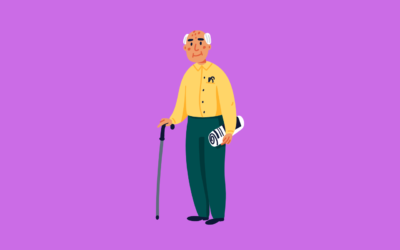Walking Sticks
The use of walking aids, like sticks and canes, dates back to the beginning of human existence. They may be found in many different shapes and sizes and can be modified in many ways without breaking the bank or wearing out quickly. With a walking stick, you may move more easily and with more stability. The four points of contact between the user and the ground provided by a quad cane, also known as a walking stick, significantly enhance balance and stability.
Disclaimer* Please note that some of this page’s links are affiliate links. Meaning if you click on them, we receive a small commission.
Last Updated on April 27, 2024 | Published: October 14, 2022

Quick Overview of Walking Sticks
Versatile Walking Support: The page introduces a variety of walking sticks, emphasizing their historical significance and the diverse shapes and sizes available. It underscores the benefits of walking sticks, particularly the enhanced stability provided by quad canes with four points of contact, promoting easy and secure movement.
Guidance on Choosing Walking Sticks: The content provides valuable information on what to consider when buying walking sticks, including factors such as cost, reviews, size, and style. It emphasizes the extra support and stability walking sticks offer. Top Picks and
Features: The page showcases top walking sticks, including quad canes and folding canes with LED lights, highlighting their unique features and benefits. It further discusses the best walking sticks for the elderly, considering factors like extra grips and portability.
What Do You Need To Know When Buying Walking Sticks?
Walking sticks can help give you extra support when walking and standing, but you can’t take all your weight like crutches.
How To Buy Walking Sticks
The best way to buy Walking Sticks online is to shop around first, as there are so many different ones to pick from, so do your research first.
Where To Buy Walking Sticks
You can buy Walking Sticks online, and we have picked some that may help on this page.
What Are The Benefits Of Having Walking Sticks?
They are great for providing people with extra support and stability.
What Should I Look Out For When Choosing Walking Sticks?
When shopping for Walking Sticks, you should look at the following:
- Cost
- Reviews
- Size
- Style
What Are The Best Walking Sticks For Elderly UK
The best walking sticks for elderly is ultimately one that meets the user’s needs. Not everyone will want the same walking stick and need them for different scenarios. Such as a walker stick for elderly with extra grips for people who struggle with grip.
Or someone who will want to take on the go with them, then a folding walking stick could be a great option. This is because folding walking sticks can break down into small parts and fit in a bag. However, folding sticks can be fiddly.
You can also get different walking stick ferrules to match your needs and style.
How To Use A Walking Stick
An injured leg should always be supported by a hand, not using the walking stick; resting it on the side of the chair is a good option.
Drive the walking stick firmly into the ground. To stoop over and rest one’s weight on. Put your weight on the walking stick resting in your hand, and push down.
It would be best if you got your balance back before you can put weight on your hurt foot and go forward. Step forward with the foot that isn’t under your walking stick.
Please refrain from any movement that causes your legs to swivel or twist.
When re-sitting, go back till your rear reaches the seat’s back. By reaching behind you, you may get a feel for the chair. Take your time and relax on the chair.
What Makes The Best Walking Sticks For Seniors
The best walking sticks for seniors should have the following features:
- Comfortable handle: The handle should be comfortable to grip and not cause pain or discomfort in the hand or wrist.
- Adjustable height: The walking stick should be flexible to fit the user’s needs and ensure proper posture.
- Non-slip base: The base of the walking stick should have a non-slip material, such as rubber or plastic, to prevent slips and falls.
- Lightweight: The walking stick should be lightweight yet sturdy enough to support the user’s weight.
- Foldable: A foldable walking stick is convenient for storage and transportation.
- Durable: The walking stick should be made of high-quality materials that can withstand regular use and last long.
- Stylish: Many seniors prefer walking sticks that are aesthetically pleasing and come in various colours or patterns.
It’s crucial to remember that when choosing a walking stick, it’s vital to pick one that is suitable for the user’s unique requirements and abilities. You should determine the ideal walking stick for your requirements in consultation with a medical expert or physical trainer.
How To Find Disability Walking Sticks
If you’re looking to find disability walking sticks, there are several options available:
- Medical supply stores: Medical supply stores typically carry a wide range of mobility aids, including walking sticks designed for individuals with disabilities.
- Many online retailers specialise in mobility aids for individuals with disabilities. These retailers often have a broader range of options and competitive prices.
- Physical therapy clinics: Physical therapy clinics may offer mobility aids for purchase and a guide on selecting the right walking stick based on individual needs.
- Personal referrals: Ask friends, family members, or acquaintances who use walking sticks for recommendations or where they purchased their walking sticks.
- Second-hand stores: Thrift and second-hand stores may have gently used walking sticks available for purchase at a lower cost.
When searching for a disability walking stick, it’s important to consider individual needs and abilities. Consult a healthcare professional or physical therapist to determine the best walking stick for your unique situation.
What To Look For In The Best Walking Stick With Seat Uk
When looking for the best walking stick with a seat in the UK, there are a few key features to consider:
- Comfort: The seat and handle of the walking stick should be comfortable for extended periods. Look for a well-padded seat and a handle that fits comfortably in your hand.
- Stability: The walking stick should be stable as a seat, with sturdy legs supporting your weight without wobbling or tipping over.
- Adjustability: Look for a walking stick with a seat that is adjustable in height. This will allow you to find the perfect fit for your body and ensure proper posture.
- Weight: The walking stick with a seat should be lightweight, easy to carry, and strong enough to support your weight.
- Durability: Consider the materials used to make the walking stick and ensure they are durable and built to last.
- Portability: If you plan to use the walking stick with a seat while travelling, look for an easy model to fold up and pack away.
- Capacity: Check the weight capacity of the walking stick with a seat to ensure it can support your weight comfortably.
Considering these features, you can find the best walking stick with a seat for your needs and ensure a comfortable and stable seat wherever you go.
Walking Sticks Frequently Asked Questions
What Height Walking Stick Do I Need?
Determine the length of your walking stick by measuring from the top of your bump on your wrist to the floor. When holding a walking stick, keeping the arm bent slightly and the shoulders level is best.
What Does Walking With A Stick Do?
Maintaining your balance and reducing wear and tear on your muscles and joints may be accomplished with the support of a cane, stick, or other walking aid that you use regularly. A walking stick or cane can be a great aid for the elderly and the disabled, but if used incorrectly, it may increase the risk of falling and being hurt.
When To Use A Walking Stick?
A walking stick may be of assistance if you have trouble keeping your balance due to an accident, illness, or general instability, a walking stick may be of assistance. It would help if you used a walking stick when you were trying to move. Such as getting up from a chair or walking around.
Where To Use A Walking Stick?
It would help if you always used your walking stick when you were out and about. But if you also use it in your home for extra support. Be sure to use it at any time you are moving around. Individuals commonly use their less dominant hand to grab the walking stick. It would help if you beat the steady side with the stick before progressing with the unstable side.
Where To Buy A Good Walking Stick?
You can buy some great walking sticks that are both stylish and practical via the links on our website. We have picked out some you might like.
Should You Use A Walking Stick Or Cane?
Canes are widespread because they are effective mobility aids that lessen the impact of walking on the body. The short distances are beneficial to make walking sticks a potential aid to balance and stability.
Should You Use A Walking Stick Or Walking Pole?
You should use a walking stick if someone has an injury and needs help walking. A walking pole may be used as extra balance and support but can’t take the full weight of someone.
Should You Use A Walking Stick Or Walker?
Useful Information on Walking Sticks
How To Use A Walking Stick Correctly
Key Takeaways For How To Use A Walking Stick Correctly Adjusting Height for Comfort: When standing tall, ensure your walking stick's handle rests slightly above your hips. This distributes weight evenly and reduces joint stress for a comfortable and secure walk....
Best Handles for Walking Sticks – Best Sellers
Key Takeaways For Best Handles for Walking Sticks Handle Variety Overview: Explore a range of walking stick handle designs, including the Derby Handle, Orthopaedic Handle, T-Handle, and Ergonomic Handle, each offering unique benefits tailored to specific needs....
Best Folding Walking Sticks – Best Sellers
Key Takeaways For Best Folding Walking Sticks Versatile Mobility Support: Folding walking sticks offer practical and versatile support for individuals in the UK, addressing varying mobility needs throughout the day. Key Features for Selection: Foldability and...
Walking Stick Buying Guide
Key Takeaways For Walking Stick Buying Guide Choosing the Right Walking Stick: Consider factors like length, material, and ergonomic design to find a walking stick that suits your needs and preferences. Benefits of Walking Sticks: Learn how walking sticks can enhance...
Best Walking Sticks – Best Sellers
Key Takeaways For Best Walking Sticks Factors for Choosing Walking Sticks: Stability is crucial for balance and fall prevention. Grip comfort and height adjustability enhance usability. Consider weight, tip design, and foldability/portability. Traditional Walking...
Best Walking Sticks For Balance – Best Sellers
Key Takeaways For Best Walking Sticks For Balance Walking Sticks for Balance Overview: Essential mobility aids and walking sticks for balance offer support and stability, reducing the risk of falls and enhancing confidence during walking. Key Features to Consider:...






